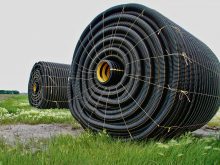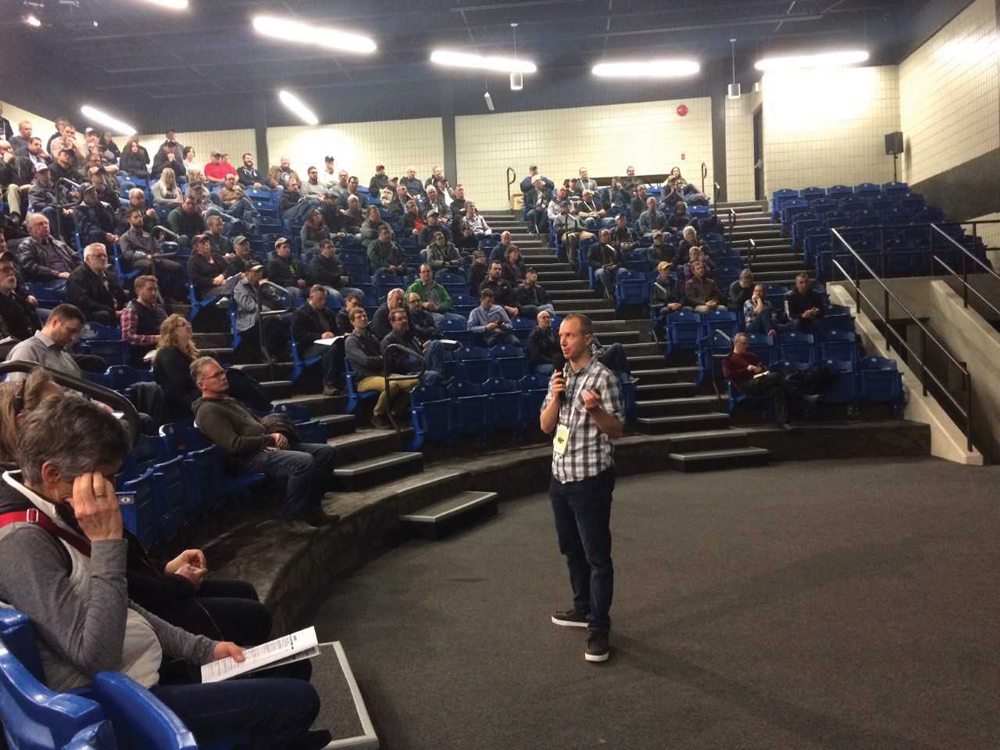It’s not easy to calculate the direct payback of installing drainage tiles on farmland, but Stan Wiebe does know one thing.
He sleeps better at night.
“We have a lot less stress,” Wiebe, part owner of Beaver Creek Farms, told farmers attending a session on drainage at Ag Days.
He believes drainage tiles have been a good investment on their 5,000-acre farm producing potatoes, wheat, corn and oats near MacGregor.
“There’s a true benefit in knowing that there’s something in place to help manage – but not eliminate – the risk of too much water,” said Wiebe.
Read Also

Gene editing digs deeper space in Canadian plant breeding
More Canadian research into crop variety development is incorporating gene editing, and one researcher notes that Canada’s regulatory approach to gene editing will help drive innovation
He estimates tile drainage has boosted yields by 15 to 20 per cent. At a cost of $700 to $800 per acre, paid for with a loan charging seven per cent interest, it would take less than 10 years to recoup the investment. Tiles are good for anywhere from 25 to 40 years.
Wiebe and his brother Don invested heavily in tiles because of the high cost of growing potatoes but only after first experimenting with tillage implements designed to improve moisture infiltration. Their Almassippi soils have six to 12 inches of rich topsoil over two to four feet of yellow sand over heavy clay. When rain comes down fast and heavy, the soil profile fills up with water and drives the air out. Under those conditions potato seed begins to rot and growing crop roots quickly smother.
After seeing good results following the tiling of their first 270-acre field in November of 1998, they have undertaken the “huge” project of tiling about 300 to 400 acres per year at 50-foot spacing “corner to corner” ever since.
Now, after big rainfall events, instead of going out to survey the damage, he and his team drive around to see “fantastically” clean, silt-free, filtered water running out of the drains in a controlled fashion.
The deluge of 2005 showed the limitations of 50-foot tiling. However, canola on tiled acres was able to recover and yield 52 bushels to the acre, compared to 18 bushels an acre for unmanaged land. Last year, he was able to compare two fields of corn after a heavy rain. The untiled field was saturated and covered in ponds, but its tiled counterpart suffered no setback, he said.
Wiebe, who has been an official weather observer with Environment Canada for 35 years, said his precipitation records show a “significant” rain event of one to two inches occurs almost every year on his farm in the month of June.
“That is the most critical month for crop loss,” he said, adding a “very significant” rain event – two to five inches – happens once every three years on his farm.
Last year, that happened three times during the growing season. Those sorts of downpours test the limits of the system, but the tiles make a big difference, he added.
Besides reducing pressure on the municipal drain system because it releases water gradually instead of in a “surge,” the advantages to the farmer include earlier seeding times, better harvest quality and crop uniformity, less run-off and erosion, better soil health due to air infiltration, and “huge” added confidence in cropping decisions, he said.
Tiles don’t dry out the soil, he added. The “good water” trapped in the soil particles stays put and only the excess goes off the land via the pipes.
“Our experience is that in a really dry year, the yield stays the same,” said Wiebe. daniel. [email protected]
———
“Wesleepwellat night.Wehavea lotlessstress.”
– stan wi ebe














